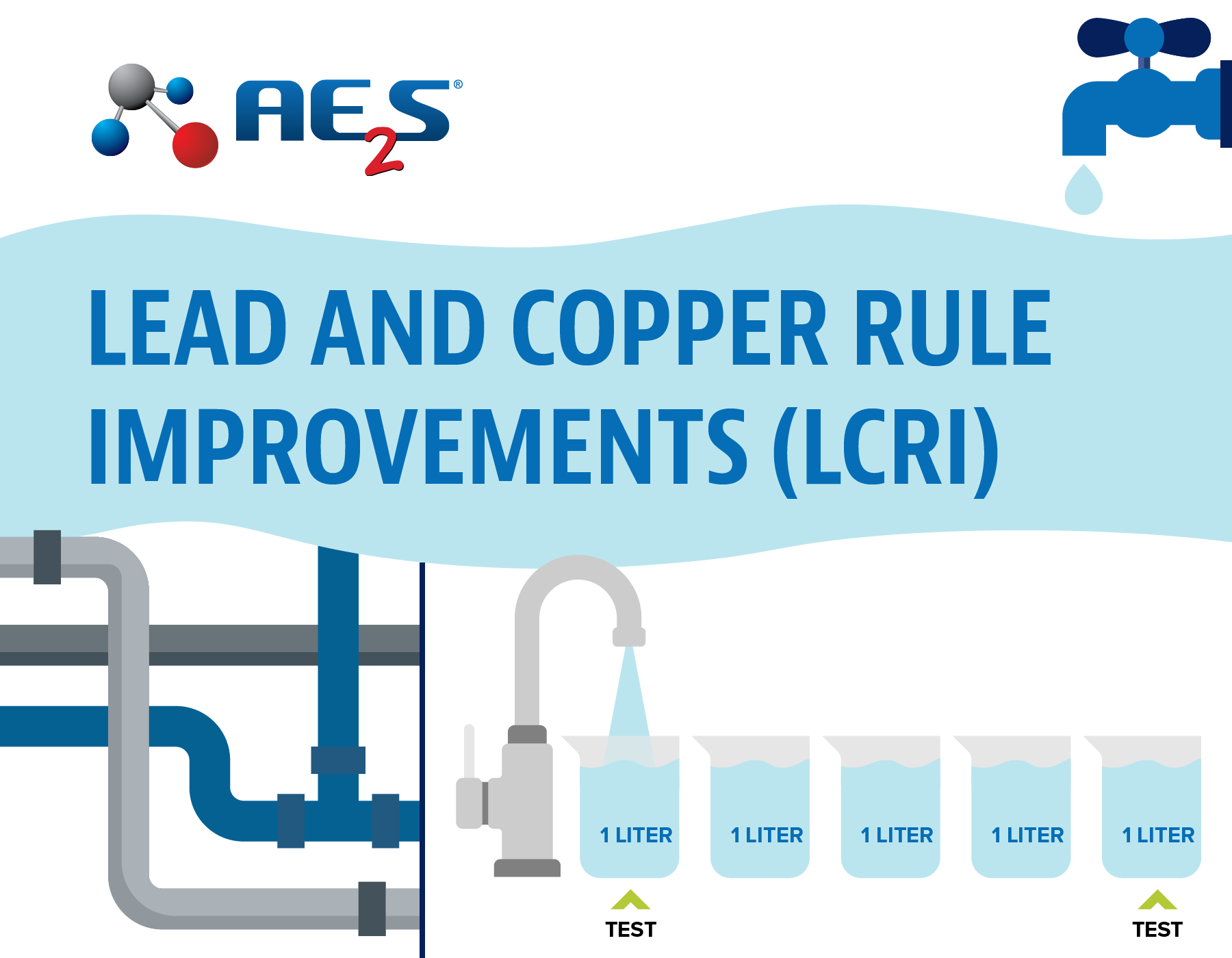The final Lead and Copper Rule Improvements (LCRI) rule was announced a few days before the Lead and Copper Rule Revisions compliance date of October 16, 2024. The U.S. Environmental Protection Agency (USEPA) is giving water systems three years to learn the requirements in the LCRI and to prepare for the changes.
The final LCRI rule focuses on six key areas:
Locate Legacy Lead Pipes: The final rule supports ongoing inventory efforts to locate existing lead pipes. Under the Lead and Copper Rule Revisions (LCRR), water systems submitted their initial service line inventories by October 16, 2024. Under the LCRI, the inventories will need to be updated regularly. Within three years, systems must develop a baseline inventory, including connectors, and submit it by November 1, 2027. In addition, systems must validate a portion of their non-lead service lines by December 31, 2034, except those installed after the applicable Federal, State, or local lead ban.
Lead and Galvanized Requiring Replacement Pipe Replacement: Systems with at least one lead, galvanized requiring replacement, or unknown service line must create a replacement plan that includes a strategy to prioritize replacement considering community-specific factors, such as populations disproportionately impacted by lead. Water systems are required to make the inventories and replacement plans available to the public. Partial lead and galvanized requiring replacement service line replacement is not allowed, and lead connectors must be removed when identified. For the first time, USEPA has issued a 10-year timeframe to replace lead service lines. The clock begins ticking three years after the LCRI compliance date of November 1, 2027, requiring all lead and certain galvanized service lines to be replaced by December 31, 2037.
Improved Sampling: The LCRI strengthens tap sampling requirements. Beginning in 2028, most systems will be required to revert back to standard monitoring for lead and copper. The rule also emphasizes sampling from sites with lead service lines. For sites with lead service lines or lead premise plumbing, water systems are required to collect and analyze the first-liter and fifth-liter samples and use the higher of the two values when determining compliance with the rule. Systems must notify sample site households of lead and copper monitoring results within three business days of receiving the results.
Between January 2025 and November 2027, if a system adopts the LCRI sampling protocol including but not limited to sampling from the new Tier levels, first and fifth liter sampling protocol and their 90th percentile is less than the LCRI action level of 10 μg/L for their next required sampling period they will not have to revert to standard monitoring. If the system does not meet the LCRI 90th percentile for lead or copper, the system must begin standard monitoring after November 1, 2027.
Lower Action Level: The LCRI lowers the lead action level to 10 µg/L and eliminates the trigger level. If a water system’s 90th percentile lead level exceeds 10 μg/L, the system is required to issue a Tier 1 Public Notification for the lead action level exceedance within 24 hours to inform the public. They will also need to install or adjust their corrosion control treatment.
Strengthened Protections: The final rule includes additional requirements to reduce exposure to lead in drinking water. Water systems that exceed the lead action level three or more times out of five years must provide filters that are certified to reduce lead to customers in the service area upon request and conduct additional community outreach.
Transparent Communications: The LCRI requires more frequent and proactive communication about lead pipes and plans for replacement. The rule also requires water systems to include clear health language about the dangers of lead in the Consumer Confidence Reports. Additionally, the Consumer Confidence Reports will provide information about testing for lead in schools and childcare facilities and will tell consumers where they can find the water system’s lead service line replacement plan for the water system.
For more information about the final LCRI rule, visit the USEPA’s website or contact Nate Weisenburger, AE2S Drinking Water Practice Leader.

